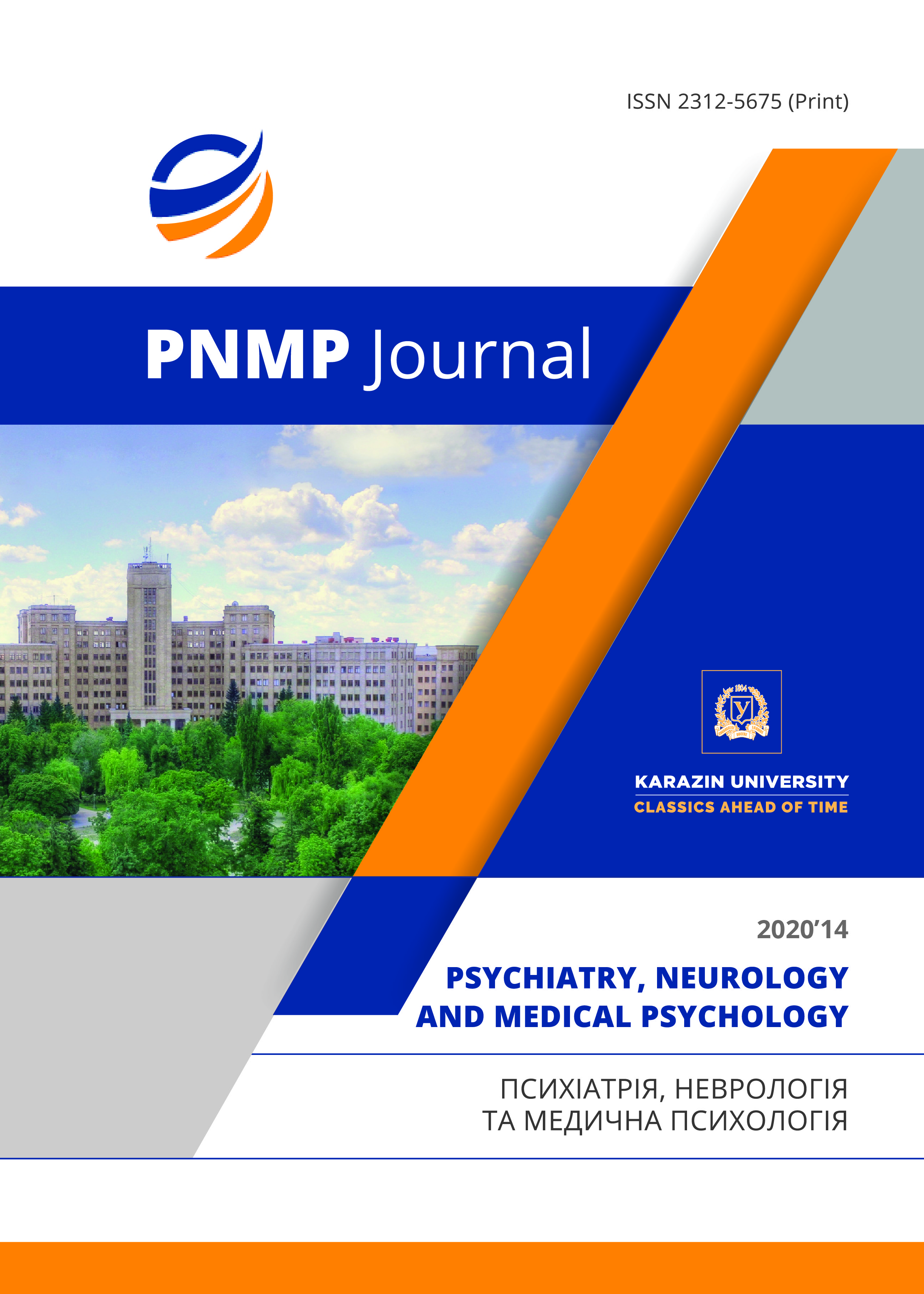Model of multinomyal logistic regression and construction of a decision tree for determination of risk factors in the development of non-psychotic mental disorders among students of higher educational institutions
Abstract
Topicality. The importance of modern research related to non-psychotic mental disorders in students of higher education is determined by the need to build a mathematical model that can identify factors that significantly affect the mental health of young people.
The aim of the study. Construction of a mathematical model of the influence of various factors on the level of mental health of students with non-psychotic mental disorders.
Materials and methods. During 2015-2017, we conducted a continuous comprehensive survey of 1,235 students in compliance with the principles of bioethics and deontology. Applied methods: clinical, clinical-psychopathological, clinical-epidemiological, clinical-anamnestic, experimental-psychological and statistical. The sample did not have significant differences in gender and age, place of residence, form of education. The survey was conducted in the intersessional period.
Results. As a result of analysis of variance, we obtained statistically significant results (ANOVA-test) between the category variable "group I" and variables denoting all scales mini mult test: 1. hypochondria (Hs), p <2,2 * 10-16; 2. depression (D), p <2 * 10-16; 3. hysteria (Hy), p <2 * 10-16; 4. psychopathy (Pd), p <2.89 * 10-14; 6. paranoia (Pa), p <2 * 10-16; 7. psychasthenia (Pt), p <2 * 10-16; 8. schizophrenia (Sc), p <7.04 * 10-16; 9. hypotension [mania] (Ma), p <1.95 * 10-10; lie scale (L), p <2.74 * 10-11; probability scale (F), p <4,66 * 10-8; correction scale (K), p <3,6 * 10-13.
It is established that for the model of multinomial logistic regression, the purpose of which is to assess the probability of belonging of the respondent to one of the groups (value of the variable "group.I"), significant predictors are marital status, presence of children, family relations, inability to adapt to the environment. quality of sleep, low productivity, increased fatigue, smoking, assessment of their own health, the need to consult a doctor, the level of anxiety, depression, neuroticism.
The coefficients of the model determine the magnitude of the change in the logarithm of the chance of being in a group ("complex", "control", "standard") against the ("comparative") group of healthy people, if the value of the predictor increases by one. The prediction accuracy in the general sample was 86.35%, and in the test sample (the main group, which included patients with NPR) - 88.52%.
Conclusions. Thus, the test and ANOVA made it possible to identify those variables that are related to the variable "group.I". Such variables are: age, specialty, etc. (a total of 92). The decision tree model, built on the same predictors as the multinomial regression model (schematic drawing), gives an accuracy of 89.95% on the training sample and 87.1% on the test sample.
Downloads
References
European Declaration on Mental Health. Problems and solutions. - WHO, 2005, 9 p. [In Russ.]
Bayevsky P.M. Prediction of conditions on the verge of norm and pathology. Medicine. 1979, 295 p.[In Russ.]
Abramov V.A., Lebedev D.S. Mental maladaptation. Journal of Psychiatry and Medical Psychology. 1996, no. 1 (2), pp. 45-55. [In Russ.]
Maruta N.O., Panko T.V., Yavdak I.O., Semikina O.Ye., Stadnik A.V. The indicator of life’s suffering in ailments on an affective path and that dynamics in the process of recovery. Ukrainian Bulletin of Psychoneurology. 2002, no.10, VIP. 2 (31), 2002, pp. 121-123. [In Ukr.]
Vedyaev F.P., Vorobyova T.M. Models and mechanisms of emotional stress. Zdorovya. 1983, 136 p. [In Russ.]
Sokolova I.M. Research methods for students' adaptation. 2001, 276 p. [In Rus.]
Lapach S.N., Chubenko A.V., Babich P.N. Statistical methods in biomedical research using Excel. Morion. 2000, 320 p. [In Russ.]
Kulachev A.P. Methods and tools for data analysis in a Windows environment. STADIA. Informatics and computers. 1999, 341 p. [In Russ.]




